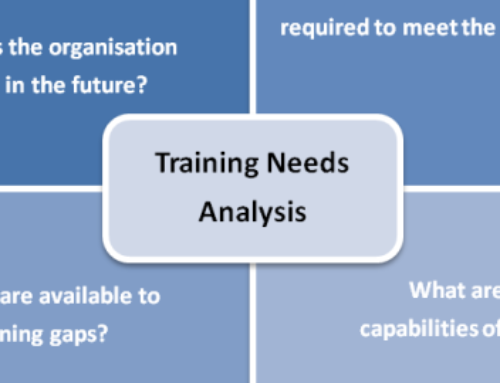The ARCS model was developed by John Keller over a period of approximately 10 years. ARCS is based on Vroom’s (1964) expectancy-value theory.
ARCS stands for:
- Attention?
- Relevance
- Confidence
- Satisfaction
Each component of the ARCS model is briefly described below.
Attention –Gaining attention is a learning prerequisite. Getting and sustaining it is critical. One must arouse a student’s knowledge-seeking curiosity without over- stimulating it. The goal is to find the proper location between boredom and hyperactivity. The Yerks-Dodson Law states that as tasks are increased in difficulty, the optimum level of motivation declines. One technique to gain and keep attention is through the use of novelty.
Novel objects or situations make the individual attend to the object or situation in an attempt to discover the nature of the object or situation. The use of color, animation, and sound can also be used as external stimuli to motivate learners. It attracts and retains users.
There are three basic ways to gain attention:
- Perceptual Arousal?-Gain and maintain student attention by the use of novel, surprising, incongruous, or uncertain events in instruction.
- Inquiry Arousal -?Stimulate information-seeking behavior by posing, or having the learner generate, questions or a problem to solve.
- Variability?-Maintain student interest by varying the elements of instruction.
Relevance –How does the instruction seem to meet the present and anticipated needs of the learners? Perhaps the most interesting aspect of this part of the ARCS model is Keller’s claim that relevance can not only come from what is taught, but also from how it is taught.
People with a high need for affiliation will perceive relevance in group projects. Curiosity, creativity, and higher-order thinking are stimulated by relevant, authentic tasks of optimal difficulty and novelty for each student, according to Wagner (1998).
There are three basic methods for providing relevance:
- Familiarity?-Adapt instruction, use concrete language, use examples and concepts that are related to the learner’s experience and values to help them integrate new knowledge.
- Goal Orientation?-Provide statements or examples that present the objectives and utility of the instruction, and either present goals for accomplishment or have the learner define them.
- Motive Matching -?Adapt by using teaching strategies that match the motive profiles of the students.
Confidence –Expectancy for success. Focus of control plays an important part here. Does the learner believe s/he is responsible for learning success (internal locus), or is s/he a helpless pawn in the learning environment (external locus)?
- People with an internal locus of control tend to attribute success to effort.
- People with an external locus look to luck or the difficulty of the task for determination of success.
In his discussion of fear of failure people, Travers (1982) provides further validation for Keller’s argument that confidence is a motivational factor in instruction. Fear of failure people will accept the risk if the odds of success are either very good or very poor. Very poor chance failures can be blamed on outside factors. Success-oriented people will accept middle-of-the-road risks and avoid the high and low-risk situations. Low risks offer too little challenge, whereas high risks are too chancy.
There are three ways of building confidence in the learner: ?
- Expectancy for Success?-Make learners aware of performance requirements and evaluative criteria.
- Challenge Setting -?Provide multiple achievement levels that allow learners to set personal goals or standards of accomplishment, and performance opportunities that allow them to experience success.
- Attribution Molding?-Provide feedback that supports student ability and effort as the determinants of success.
Satisfaction –How good do people feel about their accomplishments? Keller claims this category involves the normal reinforcements for work well done, but also contends with issues of learner control. If a student must accomplish a goal to get a teacher-derived reward as opposed to an already-existing intrinsically satisfying reward, control of the learning situation is lost to the student. In these cases, learning satisfaction actually decreases.
There are thee ways of enhancing satisfaction:
- Natural Consequences -?Provide opportunities to use newly acquired knowledge or skill in a real or simulated setting.
- Positive Consequences?-Provide feedback and reinforcements that will sustain the desired behavior.
- Equity?-Maintain consistent standards and consequences for task accomplishment.
The Keller ARCS Model also includes a design process that concerns itself with analyzing audience motivation, preparing motivational objectives and instructional elements, and assessment of motivational outcomes.
How applicable is the ARCS model to online learning environments? Arnone, and Small (1999), implicitly support the ARCS model in their description of motivational factors in educational web sites.
Web sites must be: ?
- Engaging and stimulating –captures and maintains interest
- Useful and Credible –elements that add value and promote relevance
- Organized and Easy to Use –navigation, user control, help mechanisms
- Satisfying and Effective –opportunities for interaction, exploration, fun, and ?building competence
Bibliography
Arnone, M. P., & Small, R. V. (1999). Evaluating the motivational effectiveness of children’s websites. Educational Technology, March/April 1999.
Keller, J. (1987). Development and use of the ARCS model in instructional design. Journal of Instructional Development, 10 (3), 2-10.
Travers, R. M. W. (1982). Essentials of learning: The new cognitive learning for students of education (5th ed.). New York: Macmillian Publishing Company.
Vroom, V. H. (1964). Work and motivation. New York: John Wiley & Sons.
Wagner, E. D. (1998). Interaction strategies for online training design. (ERIC Document Reproduction Service No. ED 422 881)





